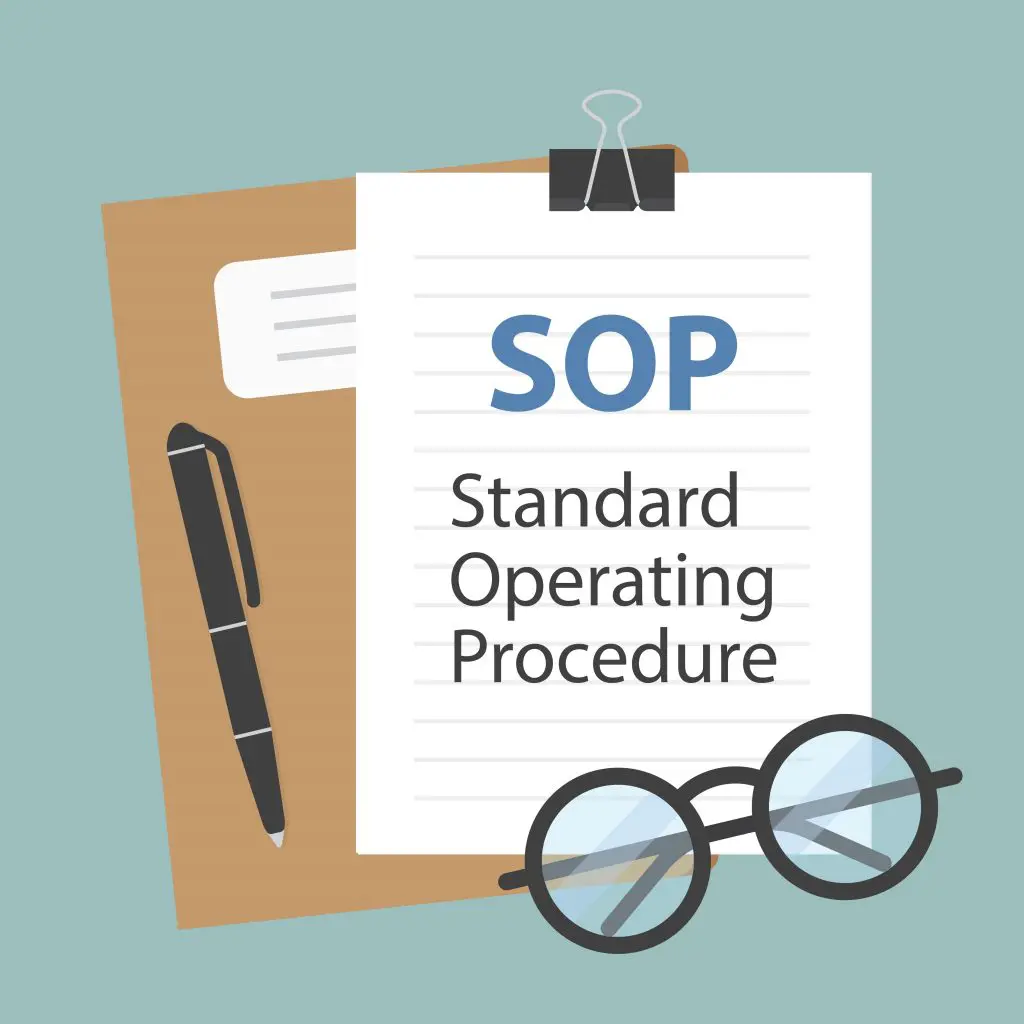No organization, no company, no task - big or small - can work without a prior plan. Plans like these offer baseline knowledge on how to carry out operations. They help standardize things within an organization and ensure consistency. In official terms, we refer to them as standard operating procedures, or SOPs or short. SOPs are literally what run things around. Let's have a deeper look into what they are and how you can design your own.
see also: 30 Best Corporate Training Companies in 2022.
What is a standard operating procedure?

To simply put it, these are a sort of step-by-step instructional guide that enable people to carry out tasks. Moreover, they help provide base knowledge for hiring, onboarding, day-to-day official management, office protocols, etc. However, they are not like every other guide or business process. Certain features make them special:
- Codified procedures - These are set of terms and conditions that come in a compiled form or like a listicle. The very purpose of them is to offer point-by-point insight into doing things. Hence, they must be in a document form.
- Specificity - Unlike business processes that explain operations in great detail, standard operating procedures focus more on being concise and specific.
- Fixed outcomes - The very purpose of these procedures is to ensure consistency of outcome. By being specific, you cut down any room for improvisation. Hence, people stick to what is on the document, getting the same result every time.
Why write an SOP?
Why go through all the hassle of designing a to-do managerial document? Well, just saying that it makes things easier is not enough. Here are key advantages in favor of developing standard operating procedures for your organization.
- Consistent practice - These procedures not only tell people how to do their tasks but in doing so, cut down any operational costs within organizations. For instance, you no longer have to explain simple tasks to your employees, saving time and resources. Furthermore, having different managers come in and explain the same things to people can change the outcomes. SOPs then jump in to ensure consistency. Make sure that every time the end result is the same for everyone.
- Accountability - By setting up a standard self-directed procedure, you are essentially shifting accountability over to individuals. People then are expected to complete tasks responsibly and follow the outlined standards. Hence, they feel more accountable for their actions and avoid making any excuses for avoiding their tasks.
- Create base knowledge for organizations - Changing trends in businesses and markets mean a constant need for evolution. However, with constant flux, it can be difficult to set a standard set of protocols, leading the companies into chaos. SOPs are tools that collect and compile knowledge over different periods, storing essential information that has helped the company in the past and can also help in the future. Thereby, they create a base knowledge for a company. These basics also help in determining long-term goals and in shaping company values.
- Sets a standard - Isn't that the very point of making them in the first place? These standards are not just for quality insurance. They set up benchmarks for all sorts of company operations. For example, recruitment, employee onboarding, company ethics, etc. They are about maintaining workplace trends and helping others adjust to them.
Hopefully, these reasons were enough to convince you of the necessity of having workplace standard operating procedures. Now let's look into the very process of developing and designing them.
How to format SOPs?
It can be a daunting task for someone new to this. Where to begin, how to proceed, what to focus on, etc. There are just so many elements to keep in mind. Also, the responsibility of drafting such a document is huge. One minor setback and you mess up the very operations of the organization.
Here are some standard formats for drafting SOPs. These are sure to help both rookie and expert managers with the task.
There are three major formatting ways:
- Step-by-step: This approach focuses on developing a sequential instructional guide. Tasks are broken down simply and concisely e.g. step 1 > step 2 > step 3 and so on. The step-by-step approach works best for smaller and less complex tasks.
- Hierarchical: This one follows a top-down approach and is specifically for complex processes. Ones, which do not require any decision-making nonetheless. The process follows multiple phases; outlining the policy > sharing the procedures > explaining the components > and organizing the documents.
- Flow chart: This format is a bit like 'choose your adventure' where your choices determine the following outcomes. Flowcharts work by streamlining the action process for the tasker. Given its highly flexible adaptive ability, it is best for tasks that require swift decision-making.
How to write a standard operating procedure?

Now to get down to business! Sadly, there is no one-size-fits-all formula for this. Since writing as a process differs from person to person and from purpose to purpose. However, as a sort of guide, this section offers a four-step structure for writing a standard operating procedure.
1. Act on it
Yes, it sounds a little strange, suggesting to begin writing with action. What I mean to say is that start with what you already have on your hands - or agenda. Take a look at the tasks you are already doing or have been doing. It is important to be confident about them. You can not just choose any tasks but ones you feel like you have somewhat mastered.
Begin then by outlining these tasks and breaking them down as instructions for someone else. Here your focus should be to enable the other person to do the task as you do but via writing alone.
2. Note it down
Before you begin noting down the steps for SOPs, keep in mind what sort of tasks are you targeting, who are the taskers, where do you intend to carry them out, and when. These will help you be more specific. Furthermore, make sure to explain all the technical bits. These procedures move between departments and often people from differing departments do not understand even the simpler terms from other departments. So use simple language to avoid confusion.
You can even include visuals where necessary. For instance, you can include some video tutorials or add pictures for a better explanation of things. Before final drafting, ask people from other departments if they can understand the points and interpret them in the same way as you do. If they do not, then you will have to revise things.
3. Share and explain
Once you are done with the writing part, your task is to share it with others and determine if the SOPs achieve the desired outcomes. For this, seek someone completely unfamiliar with the task and ask them to carry the task according to the given instructions. Take notes where they struggle and need help and use them to later fill in the gaps.
4. Review and revise
One important thing to understand is that standard operating procedures are not rigid. They are specific, yes but they are also adaptive. The goal is not to keep the SOPs standardized but the actual company operations standardized for greater optimization - that is the intrinsic goal.
Since standards also change over time, make sure to review and renew your procedures over time to meet the new standards. You can even make this a rotational responsibility by involving more members of the team. Whenever someone comes across something new and there is a need to modify things, they can contribute to the editing process. Keeping things fresh and collaborative.
Sum up
A standard operating procedure is an integral component of workplace operations. It acts as a bible of sorts for your organization, giving direction to people on how to achieve the tasks. So make sure to give it the due attention it deserves. For your further assistance, here is a good resource of template samples for designing SOPs from TemplateLab. Check them out and get started!
%201.svg)
.webp)

.png)






%201.svg)